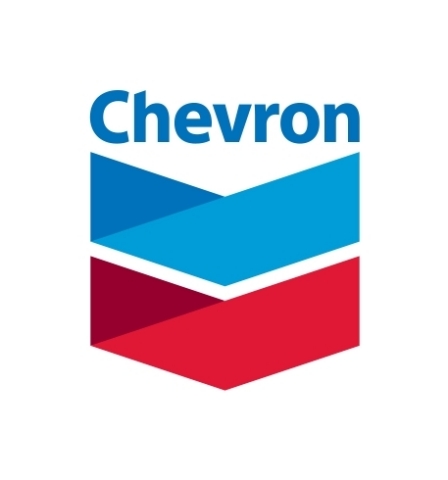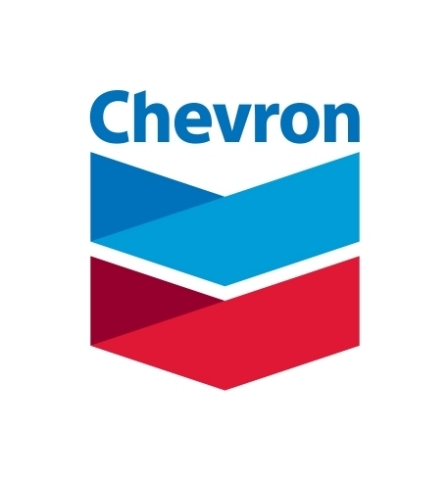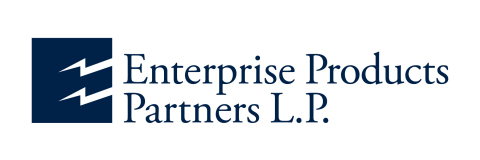SAN RAMON, Calif. & HOUSTON--(BUSINESS WIRE)--Chevron U.S.A. Inc., through its Chevron New Energies division, and a subsidiary of Enterprise Products Partners L.P. (NYSE: EPD) announced a framework to study and evaluate opportunities for carbon dioxide (CO2) capture, utilization, and storage (CCUS) from their respective business operations in the U.S. Midcontinent and Gulf Coast. The companies expect the initial phase of the study in which they will evaluate specific business opportunities to last about six months.
“This joint effort has the potential to advance our ongoing work to grow our lower carbon businesses with commercial scale using the industry expertise both companies bring to the project,” said Jeff Gustavson, president of Chevron New Energies. “International climate change scientists working with the United Nations have identified carbon capture as a critical technology needed to help the global energy system transition to a lower carbon future.”
The companies have successfully worked together on prior business opportunities and believe they bring complementary capabilities to successfully pursue CCUS. Projects resulting from the evaluation would seek to combine Enterprise’s extensive midstream pipeline and storage network with Chevron’s sub-surface expertise to create opportunities to capture, aggregate, transport and sequester carbon dioxide in support of the evolving energy landscape.
“The joint study with Chevron is part of our growing focus on developing and utilizing new technologies and leveraging our transportation and storage network in order to better manage our own carbon footprint and provide customers with new midstream services to support a lower carbon economy,” said A.J. “Jim” Teague, co-chief executive officer of Enterprise’s general partner. “Our success in upgrading and repurposing existing assets will be important to the success of any initiative we move forward with.”
Chevron is one of the world’s leading integrated energy companies. We believe affordable, reliable and ever-cleaner energy is essential to achieving a more prosperous and sustainable world. Chevron produces crude oil and natural gas; manufactures transportation fuels, lubricants, petrochemicals and additives; and develops technologies that enhance our business and the industry. To advance a lower-carbon future, we are focused on cost efficiently lowering our carbon intensity, increasing renewables and offsets in support of our business, and investing in low-carbon technologies that enable commercial solutions. More information about Chevron is available at www.chevron.com.
Enterprise Products Partners L.P. is one of the largest publicly traded partnerships and a leading North American provider of midstream energy services to producers and consumers of natural gas, NGLs, crude oil, refined products and petrochemicals. Our services include: natural gas gathering, treating, processing, transportation and storage; NGL transportation, fractionation, storage and export and import terminals; crude oil gathering, transportation, storage and export and import terminals; petrochemical and refined products transportation, storage, export and import terminals and related services; and a marine transportation business that operates primarily on the United States inland and Intracoastal Waterway systems. The partnership’s assets include approximately 50,000 miles of pipelines; 260 million barrels of storage capacity for NGLs, crude oil, refined products and petrochemicals; and 14 Bcf of natural gas storage capacity. Please visit www.enterpriseproducts.com for more information.
CAUTIONARY STATEMENTS RELEVANT TO FORWARD-LOOKING INFORMATION FOR THE PURPOSE OF “SAFE HARBOR” PROVISIONS OF THE PRIVATE SECURITIES LITIGATION REFORM ACT OF 1995
This news release contains forward-looking statements relating to Chevron’s operations that are based on management's current expectations, estimates and projections about the petroleum, chemicals and other energy-related industries. Words or phrases such as “anticipates,” “expects,” “intends,” “plans,” “targets,” “advances,” “commits,” “drives,” “aims,” “forecasts,” “projects,” “believes,” “approaches,” “seeks,” “schedules,” “estimates,” “positions,” “pursues,” “may,” “can,” “could,” “should,” “will,” “budgets,” “outlook,” “trends,” “guidance,” “focus,” “on track,” “goals,” “objectives,” “strategies,” “opportunities,” “poised,” “potential” and similar expressions are intended to identify such forward-looking statements. These statements are not guarantees of future performance and are subject to certain risks, uncertainties and other factors, many of which are beyond the company’s control and are difficult to predict. Therefore, actual outcomes and results may differ materially from what is expressed or forecasted in such forward-looking statements. The reader should not place undue reliance on these forward-looking statements, which speak only as of the date of this news release. Unless legally required, Chevron undertakes no obligation to update publicly any forward-looking statements, whether as a result of new information, future events or otherwise.
Among the important factors that could cause actual results to differ materially from those in the forward-looking statements are: changing crude oil and natural gas prices and demand for our products, and production curtailments due to market conditions; crude oil production quotas or other actions that might be imposed by the Organization of Petroleum Exporting Countries and other producing countries; public health crises, such as pandemics (including coronavirus (COVID-19)) and epidemics, and any related government policies and actions; changing economic, regulatory and political environments in the various countries in which the company operates; general domestic and international economic and political conditions; changing refining, marketing and chemicals margins; the company’s ability to realize anticipated cost savings, expenditure reductions and efficiencies associated with enterprise transformation initiatives; actions of competitors or regulators; timing of exploration expenses; timing of crude oil liftings; the competitiveness of alternate-energy sources or product substitutes; technological developments; the results of operations and financial condition of the company’s suppliers, vendors, partners and equity affiliates, particularly during extended periods of low prices for crude oil and natural gas during the COVID-19 pandemic; the inability or failure of the company’s joint-venture partners to fund their share of operations and development activities; the potential failure to achieve expected net production from existing and future crude oil and natural gas development projects; potential delays in the development, construction or start-up of planned projects; the potential disruption or interruption of the company’s operations due to war, accidents, political events, civil unrest, severe weather, cyber threats, terrorist acts, or other natural or human causes beyond the company’s control; the potential liability for remedial actions or assessments under existing or future environmental regulations and litigation; significant operational, investment or product changes undertaken or required by existing or future environmental statutes and regulations, including international agreements and national or regional legislation and regulatory measures to limit or reduce greenhouse gas emissions; the potential liability resulting from pending or future litigation; the company's ability to achieve the anticipated benefits from the acquisition of Noble Energy, Inc.; the company’s future acquisitions or dispositions of assets or shares or the delay or failure of such transactions to close based on required closing conditions; the potential for gains and losses from asset dispositions or impairments; government mandated sales, divestitures, recapitalizations, taxes and tax audits, tariffs, sanctions, changes in fiscal terms or restrictions on scope of company operations; foreign currency movements compared with the U.S. dollar; material reductions in corporate liquidity and access to debt markets; the receipt of required Board authorizations to pay future dividends; the effects of changed accounting rules under generally accepted accounting principles promulgated by rule-setting bodies; the company’s ability to identify and mitigate the risks and hazards inherent in operating in the global energy industry; and the factors set forth under the heading “Risk Factors” on pages 18 through 23 of the company's 2020 Annual Report on Form 10-K and in other subsequent filings with the U.S. Securities and Exchange Commission. Other unpredictable or unknown factors not discussed in this news release could also have material adverse effects on forward-looking statements.
Enterprise Forward-looking Statement
This press release includes “forward-looking statements” as defined by the Securities and Exchange Commission. All statements, other than statements of historical fact, included herein that address activities, events, developments or transactions that Enterprise and its general partner expect, believe or anticipate will or may occur in the future are forward-looking statements. These forward-looking statements are subject to risks and uncertainties that may cause actual results to differ materially from expectations, including required approvals by regulatory agencies, the possibility that the anticipated benefits from such activities, events, developments or transactions cannot be fully realized, the possibility that costs or difficulties related thereto will be greater than expected, the impact of competition, and other risk factors included in Enterprise’s reports filed with the Securities and Exchange Commission. Readers are cautioned not to place undue reliance on these forward-looking statements, which speak only as of their dates. Except as required by law, Enterprise does not intend to update or revise their respective forward-looking statements, whether as a result of new information, future events or otherwise.





